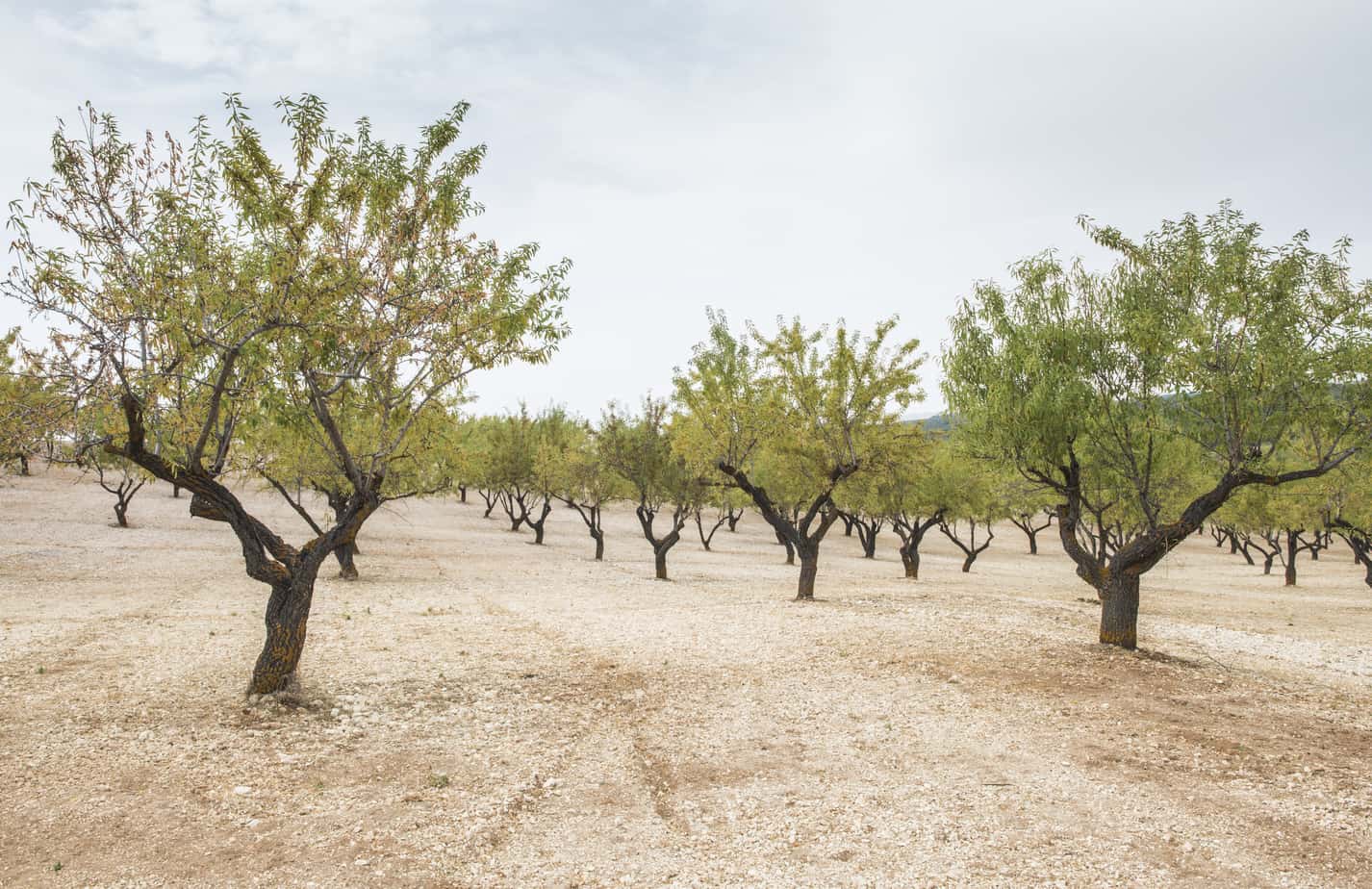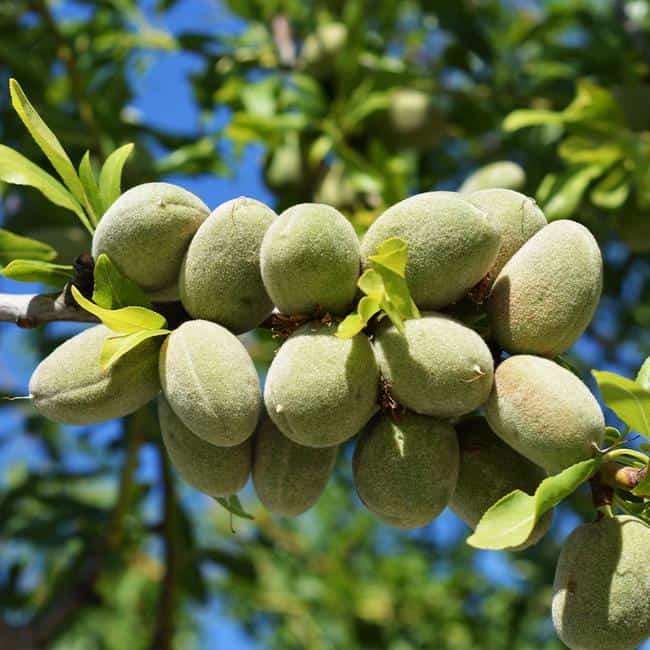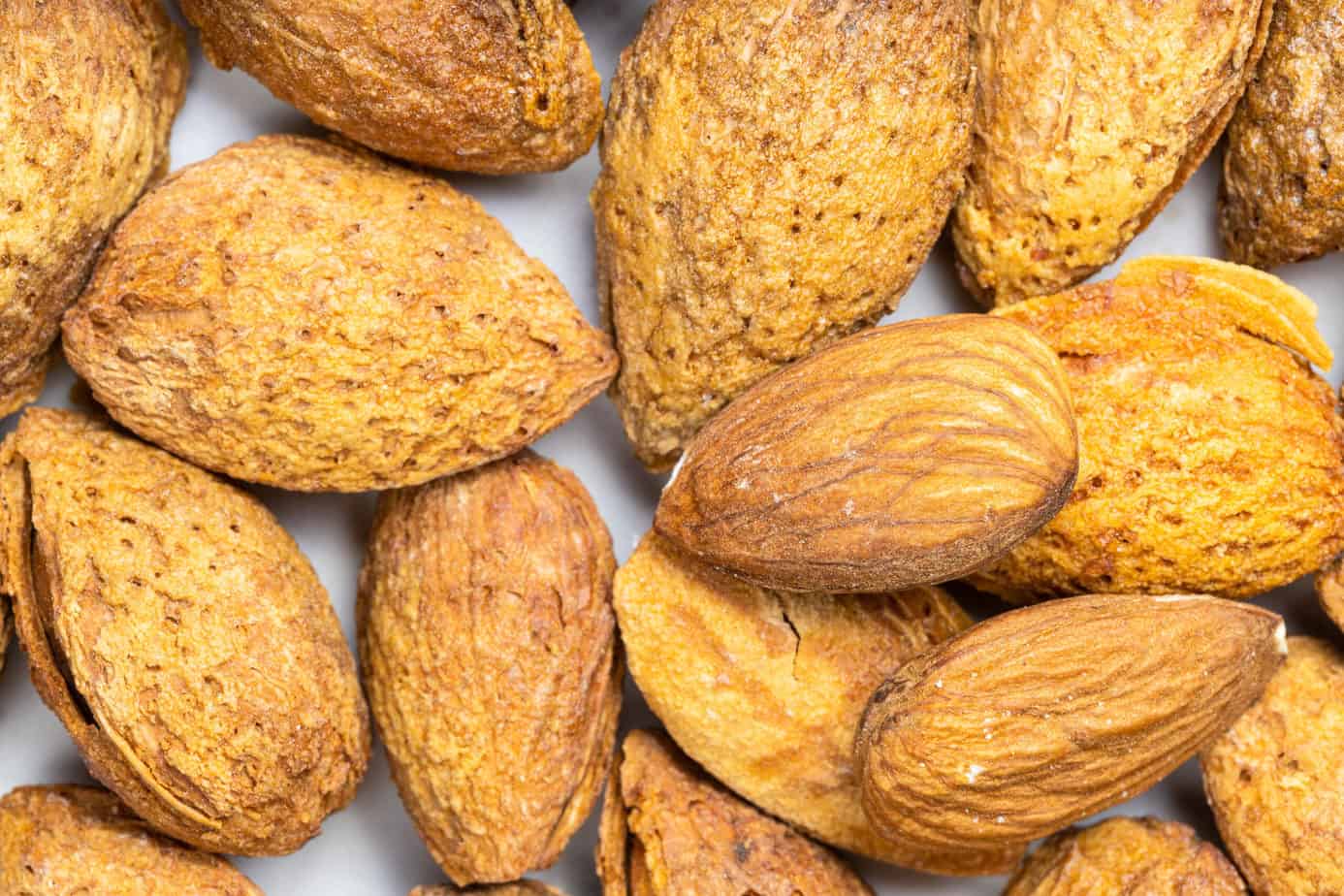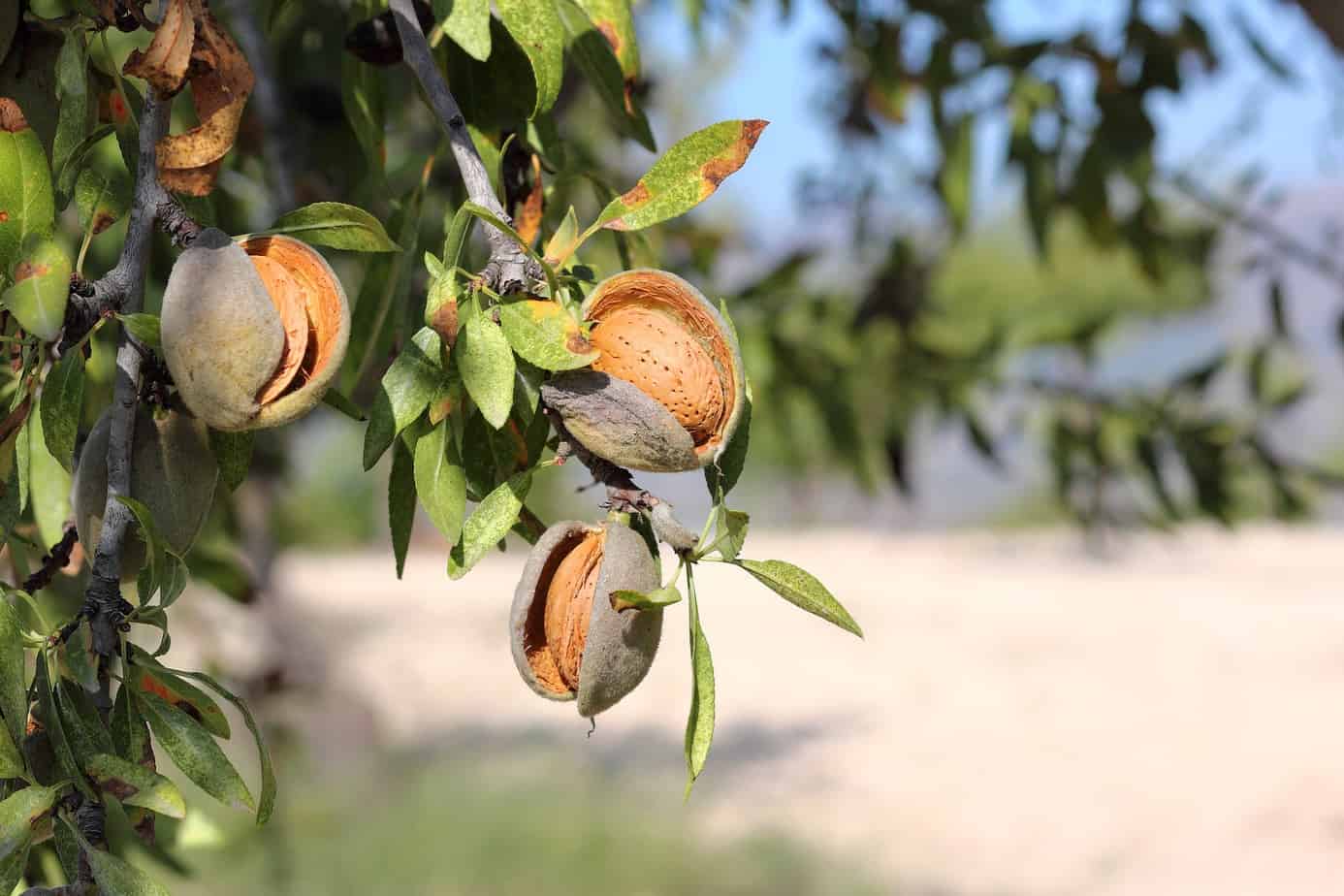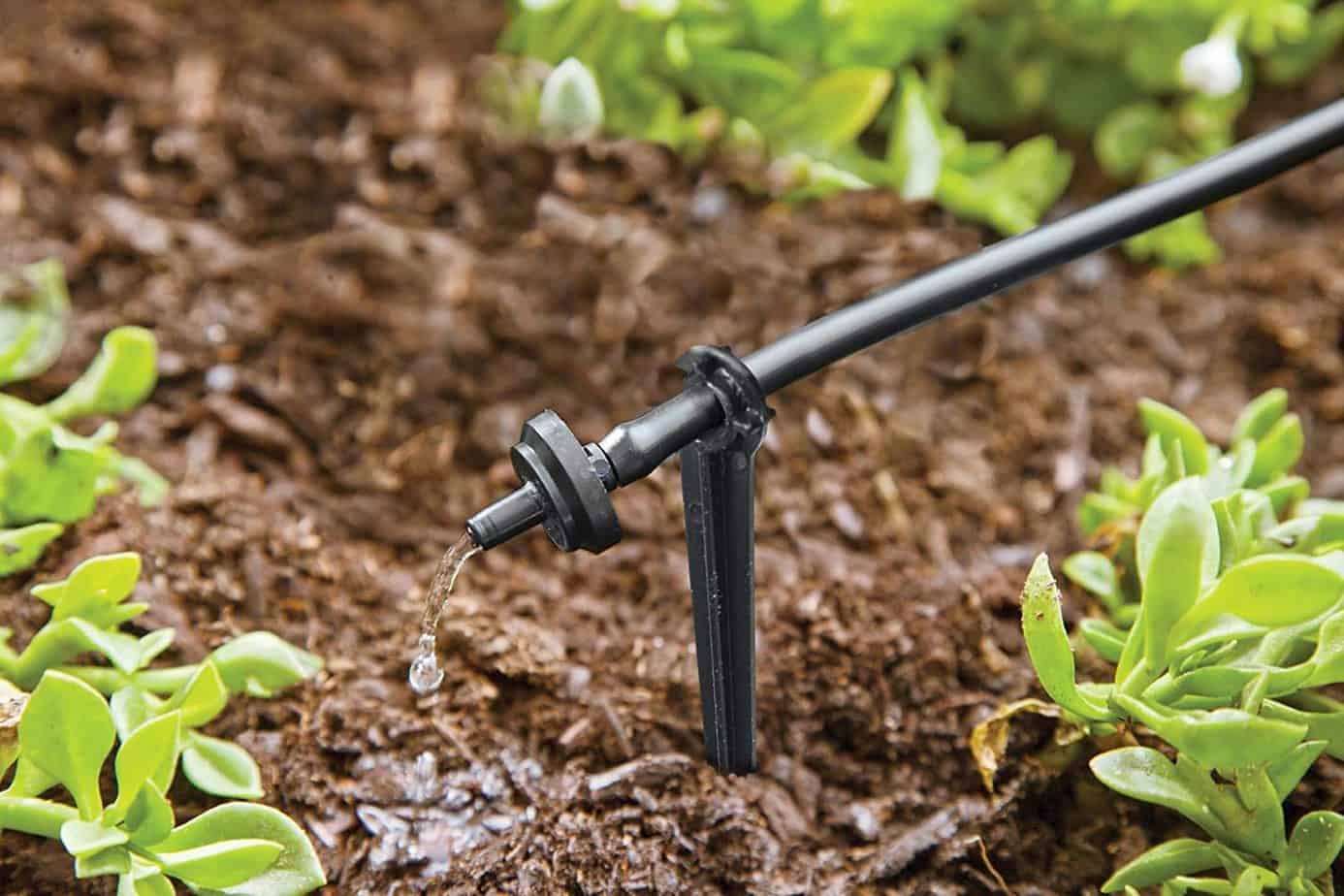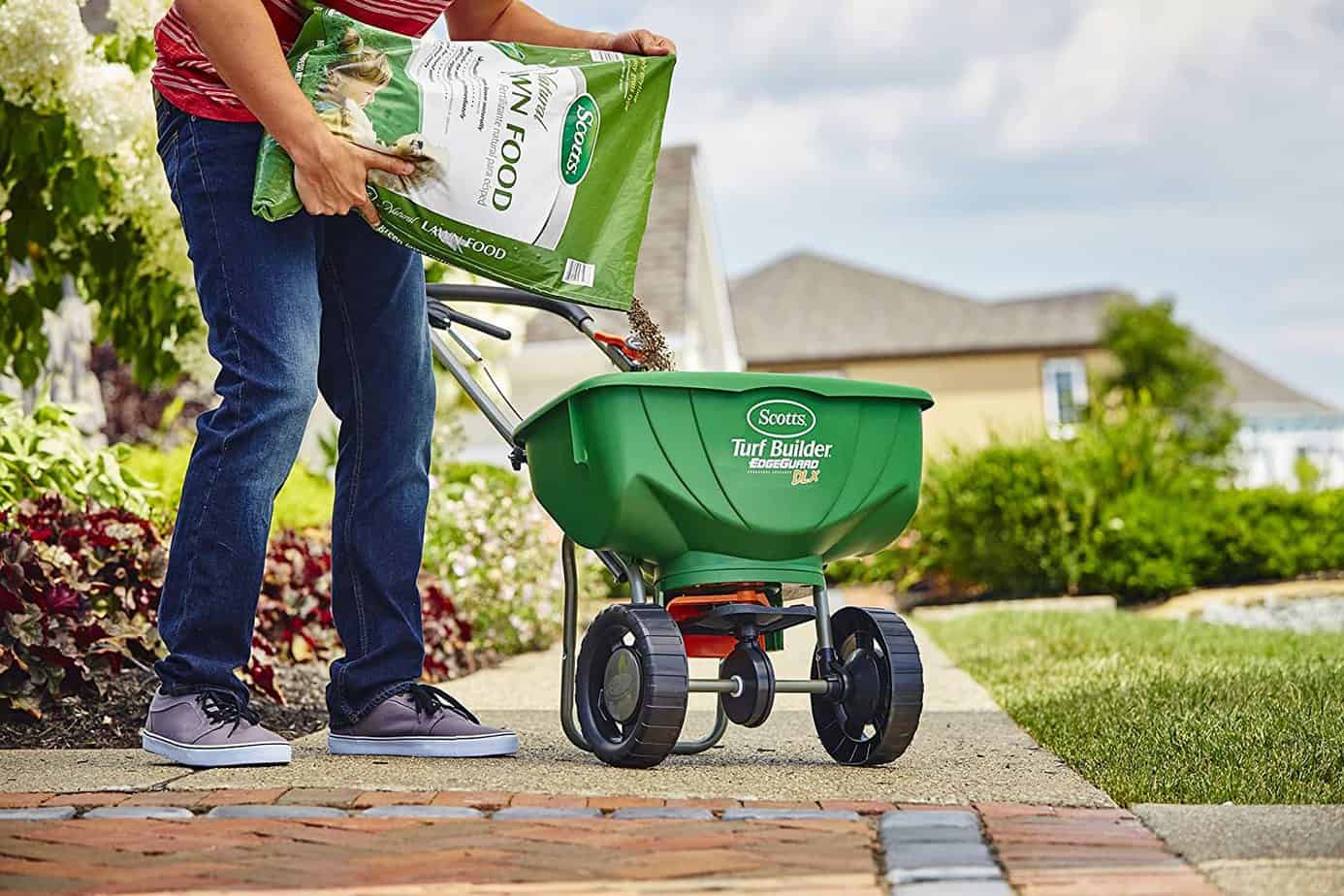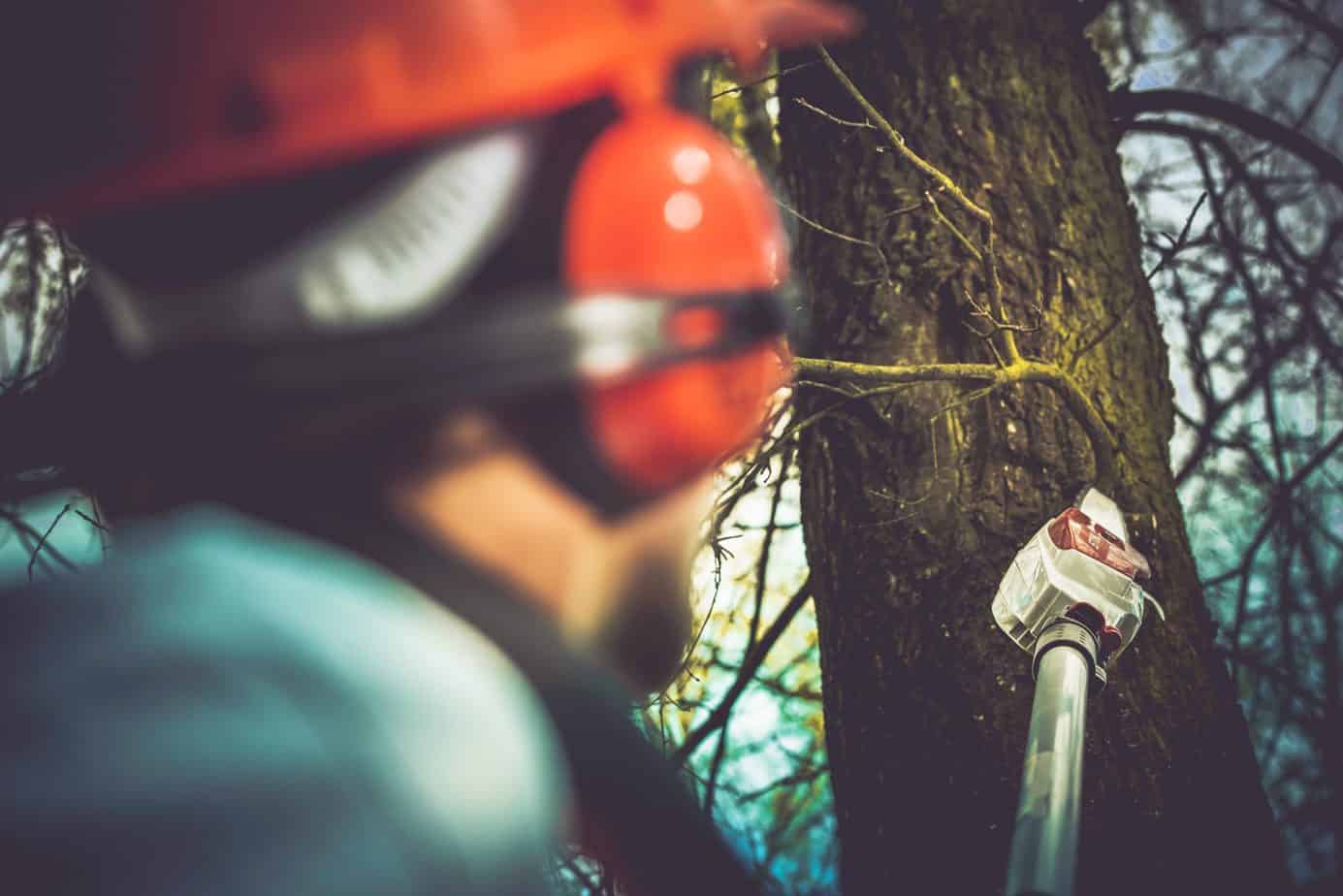- Apricot Tree: Can You Really Grow It On Your Own? - November 29, 2021
- Lavender Tree: How Soon Your Can Expect Your Tree To Grow? - November 2, 2021
- Bottle Brush Tree: Can You Grow It In Your Own Yard? - November 2, 2021
The almond tree (Prunus dulcis) is native to Southwest Asia. It is an essential economic crop tree people grow primarily in 28 degrees and 48 degrees N Mediterranean climates, with 80 percent of the global supply coming from California.
Almond comes in bitter almond (P. dulcis variety amara) and sweet almond (P. dulcis variety dulcis). People are familiar with the sweet almond as an edible type used as a source of almond meal or almond oil or in cooking and consumed as nuts.
How to Identify Almond Tree
Almond tree possesses a hardy dormancy and is deciduous. The tree typically grows about 3 to 4.5 meters tall and is stunningly beautiful when in bloom. It can produce five-petaled, fragrant, and white to light pink flowers from late January to early April of the Equator north.
In addition, the flowers can facilitate other cultivars’ cross-pollination through insect pollinators since they are self-incompatible. Its growing fruit, known as a drupe, looks like a peach until maturity, and then the leathery outer hull or covering will curl outward, split open, and discharge the pit.
Almonds are typically dry fruit and not actual nuts. Instead, they are seeds covered in a hard fruit coating. Almonds bud with white pinkish five-petal flowers as they bloom in February. The almond tree has a similar sub-genus to peach trees. As such, they have specific morphological similarities.
- A kernel possesses a seedcoat that you can or may not remove before eating.
- An immature almond hull will appear fuzzy and green, looking like a small green oblong peach. Its shell has furrows all over with similarity with a peach pit.
- The almond nut is a kernel or edible seed, a hard shell, or an outer hull.
Some specific favorable regions cultivate the sweet almond, even though nut crops can be ambiguous with potential frost. Small plantings primarily for family consumption characterized the Old World almond cultivation. These cases entailed individual trees’ bearing capacity, variability in condition or age, and interplanting trees with other crops.
The modern almond tree grows essentially more industrial, having massive orchards of about three tree types of a similar age. They use mechanized tree shakers to expedite harvesting and pollinate their trees during the flowering season by renting honeybees.
Where Does Almond Tree Grow
As an indigenous to Iran, an almond tree can grow well in California since it can commercially manage orchards and has a climate suitable for growing the tree. In addition, it can cope well with California’s innovative and infrastructure technology and research and its Mediterranean climate of hot summers and wet winters. As such, US food shoppers can shop for California almonds at a local grocery store.
Essentially, anyone can grow an almond tree outside of California provided the suitable conditions, even though it may not be on a commercial level. Almond trees do not produce any crop every year in heavy winter and low-light areas like New England and the Midwest.
Almond Tree growers will need to ensure their Almond Tree has everything it requires, including the appropriate temperature, water, sun, and soil conditions to grow an almond tree and ensures it thrives.
Some of the factors that inhibit fruit set and growth are very high summer temperatures and low spring and winter temperatures. Based on the variety, temperatures below 24 degrees for half an hour or longer can lead to severe damage during flowering. On the other hand, low soil moisture and very high summer temperatures can lead to almond shrinkage.
There is little demand for almonds in the cold to break the buds’ dormancy. It needs about 250 to 350 hours of exposure to less than 45 degrees temperature. This case testifies why almond trees grow well in mild winter areas and bloom earlier than other fruit trees.
The fruit gets the favor of ripening with the warm and long growing season. Also, cold weather and frequent rainfalls can deteriorate bees’ cross-pollination activities during the flowering, decreasing fruit production and set. Essentially, humid conditions and rain can favor bacterial and fungal diseases. Therefore, areas with hot and extended summers without many rainfalls or irrigated almond orchards often get the most outstanding yields.
Central California has the perfect climate for growing almond trees. Other suitable areas are Georgia, Texas, and Arizona. However, moving to the east increases fungal disease risks. When outside the US, the Mediterranean countries like Tunisia, Greece, Morocco, Spain, and Italy have the perfect climate for growing almond trees. However, growers in Australia, Iran, and Syria have succeeded in growing almond trees.
Uses of Almond Tree
Almond trees have stone fruits with a delicious kernel enclosed within the hard pit as people use it in recipes and think of it as nuts. Almond trees make fragrant and attractive landscape additions and are the earliest to bloom, compared to other stone fruit families like peaches and plums.
People eat raw almond nuts and process them into milk, syrup, paste, oil, extract, flour, and butter. Others use almond oil as a flavoring agent in medicines, perfumery, and baked goods. People also use sweet almond oil for cosmetic lotions and creams.
Essentially, we use every part of the almond tree.
Another example is sweet almonds that people eat as desserts and make candy like the delicious icing and sugared almonds called marzipan or marchpane. While people eat almonds salted or roasted, they also obtain almond oil from seeds of bitter and sweet almond trees.
We use this oil as a base for high-quality soap and skin creams. People can also produce a volatile oil liable to evaporate from the bitter almond oil residue through distillation. Experts use this to make flavoring extracts. Sometimes, they use this oil for medicine pleasant taste. We can also use almond shells as fuel for the ovens where they carry out the distillation process.
Other things people use almond trees for include:
- Aiding in weight loss
- Suitable for a diabetic diet
- Normalizing blood pressure levels
- Supporting heart health
- Reducing cholesterol levels
- Promotes brain function
- Supplementing pregnancy nutrition needs
- Improving digestive health
How to Grow Almond Tree From Seed
When you attempt to grow an almond tree from seed, your tree may not bear any fruits for its entire lifetime, just as it happens to several fruit trees like nuts, apples, citrus, and many others. This case depends on many reasons.
First, you will need to plant two compatible and different fruit-bearing varieties to harvest our almonds. When we do this, the pollen can move from one tree to another through honeybee. First, however, let’s dig right into the details since you can’t wait for the joy of growing almond trees from seed.
Searching for natural fresh harvested almonds is the first step in this process. You will be wrong if you think this process is easy because there are always roasted almonds on the market. As such, such seeds cannot sprout. Essentially, unprocessed seeds are the ones you need to grow your plant. These seeds need to be unsalted, unheated, and untreated. Thus, find freshly collected shelled almonds.
Choose about ten of these natural seeds after finding them. Even when done correctly, 50 percent or less of the seeds will germinate. But, even with that, you will have a fraction of them making it to a tiny seedling and young tree.
First, you will need to soak your shelled almonds for around 48 to 72 hours in the water. Then, collect your seeds after carefully breaking the shell. The next step is placing your seeds on a wet towel and prepare a plastic bag to put the towel on.
Put this plastic bag in a refrigerator for about three to four weeks. Some of the almond seeds would have sprouted even after three weeks. Then, prepare small pots containing compost and soil mixture where you will plant them. Plant your seeds quickly at about one to two inches in depth. After that, put the containers close to a wide window at room temperature.
With this, your seedling can enjoy sufficient sunlight. Essentially, ensure your pots are not soggy but moist. You can then transplant your seeds to a bigger container when they have reached six inches in height.
Planting Almond Tree from Sapling
Starting your almond tree growing process from a sapling is the wisest choice if you want the best results. While growing from seeds can be unreliable, it can be more cost-effective as well. Ensure cross-pollination by planting at least two almond trees even though the trees are not self-pollinating. Be sure also to plant two different plant varieties when cultivating it for its nuts.
Follow some of these helpful steps when planting an almond tree from sapling:
- Prepare well-draining soil to plant your trees. Your tree may suffer root rot if you allow too much water to accumulate around the roots. Apply humus-rich soil loam to prevent root rot since it can take in excess humidity.
- Dig a large hole that can contain the roots. Ensure to put your sapling into it carefully so as not to damage or bend the central taproot.
- Place your almond root into the hole with so much care. Plant the potted almond tree at a similar depth as when planted in the pot when transplanting your potted tree to get the best effects. The bare root trees are even easier since you can see their planting depth. With that, it comes easy to identify a color difference.
- Clear the tree base to prevent stifling the tree from any competing vegetation. Prevent the weeds from hurting your tree and maintain moisture by mulching the area.
- Put about two buckets of water when you have filled the hole up to about three-quarters deep. Apply some fertilizer to the second bucket.
- When adding more enhanced soil, add each pile of dirt by using a shovel to tap the soil.
- Don’t forget to prune your tree when you have planted it firmly into the ground. Your tree can only develop a robust root system when you offer it heavy pruning. Cut about one-half of the branches and twigs.
Almond Tree Growing Conditions
Since they are in the same family as plums, nectarines, and peaches, almond trees can similarly grow as kernels within the fruit. However, while growers can grow it from the seed or nut, a more reliable way of growing it is to buy a young tree, either pot-grown or bare-root, which can fruit in the second or third year.
Growing almond trees is easy. However, there will be slight cropping, except you have the right weather conditions, such as frost-free winters and dry, warm summers. Almond trees are drought resistant when established.
- You can plant pot-grown almond trees at any time of the year. However, the dormant period in winter is the best time to plant when the soil is not water-logged or frozen. Late autumn-early spring is the best time to plant bare-rooted trees.
- Almond trees will thrive well in deep, free-draining soil.
- They can tolerate light shade and prefer a sunny position. You will ripen nuts in shaded areas.
- Ensure that the grafting union is above the soil level when planting your fruit tree.
- Almond prefers a hole large enough to accommodate the root’s size and depth after planting comfortably.
- Eliminate any vegetation around the tree base and mulch quite well. This process will help discourage weeds and keep in the moisture while competing and growing with the young tree.
- The almond tree will bloom in the second year. As such, prune the tree after it has set fruit and flowered.
Harvesting Almond Trees
- Late August to September is the perfect time to harvest almonds.
- The casings will start to split open or the fleshy outer hulls in a dry, warm summer, enabling the kernel to dry. Removing the kernel will entail cutting the outer casing if you have hostile weather. Typically, you will know it is time to harvest your almonds when three-quarters of the hulls are split open.
- Shake out the almonds or pick them. You can catch them by laying a sheet or net underneath.
- Prepare a warm place to lay the kernels with appropriate air circulation so they can dry in a few days.
- You can store almonds when in a shell or their kernel.
When to Plant Almond Tree
Start the planting process from November to February when the almond tree is dormant as a bare rooted tree. Doing this is necessary because a dormant tree can leaf up considerably in its first spring and suffer less transplant shock.
You can also plant a pot-grown tree from late spring to the summer. This process can be pretty advantageous for colder climates where the tree can establish before its first winter.
How to Plant Almond Tree
It is practical to know that almond trees are incredibly susceptible to spring frost and don’t endure excessively wet soil when panting them. These trees can grow well in moist, mild winters and dry, hot summers with full sun. However, an almond tree may not set fruit for you if your area does not fall within these boundaries.
Additionally, not many almond tree varieties are self-productive. Therefore, these varieties can only produce fruit through cross-pollination. As such, it is essential to plant about two trees. Essentially, you can plant two trees in the same hole if you don’t have enough space. With that, the flowers will cross-pollinate as they intertwine while growing together.
As deep-rooted plants, you need to plant your almond trees in fertile, deep, and well-draining sandy loam. Plant the tree about 19 to 26 feet apart and ensure to water them even though they are drought resistant. Apply organic and nitrogen fertilizer to help in growth. Almonds have nigh phosphorus (P) and nitrogen (N) requirements.
Dig a broader hole to plant the almond tree and ensure that the roots easily fit into the hole depth. Then, water it deeply. Your tree may require stakes if you are in a windy region. However, remove the stakes to allow for proper growth after a year.
Almond Tree Water Requirements
Almond trees will yield a harvest that sustains its maximum potential with an ample amount of irrigation. Of course, you can only meet your tree’s needs when you supplement rainfall with an ideal amount of water.
However, you can still expect a good harvest even if you slack off a bit in the latter half of the growing season. By then, you can enjoy almond cookies, roasted almonds, or almond butter to your heart’s content.
- Your almond tree requires morning irrigation when you have a cooler temperature. Additionally, don’t water from overhead but close to the ground. A soaker hose or drip irrigation solution will help minimize water loss and also works well.
- Use about two or three inches of mulch to cover the ground under the almond tree’s canopy. You can use bark mulch. Have at least three inches of distance between the mulch and the trunk to prevent rot. You can keep away weeds using valuable water and conserve moisture using mulch.
- Give your plant regular watering, beginning the process in March when the buds swell. Provide your tree with one to one and a half inches of water every two weeks for March and April. You will get a good harvest with this amount of water.
- Water your tree with three to four inches of water every two weeks from June to August. An almond tree will grow well with these conditions. Cut back on the watering amount to two and two and a half inches every other week starting in July. However, you can expect nut production reduction in return.
- Reduce watering almond trees in the fall. Provide the tree with two to two and a half inches of water every other week in September. Give it one inch of water in October and a half-inch of water in November. Water the plant using one-third less water than suggested in fall months without jeopardizing almond’s overall health.
- Stop watering your tree regularly during the winter. However, use about one inch of water for your almond tree once a month when the winter is drier than usual. With this, your tree will not dry out during dormancy.
Almond Tree Sun Requirements
Full sun is perfect for almond trees, about six hours a day. However, the tree will have better blooms with more sun. You can whitewash the large branches and the trunk’s south side with paint to protect your almond trees when the sun is too hot. Water your tree once a week during its first year after planting.
Best Almond Tree Fertilizer
Growers often use organic fertilizer and chemical pesticides to treat their almond trees. However, organic fertilizer and natural products are highly recommended. With that, we will focus on their applications. Natural fertilizers have many advantages, and one of their most significant advantages is the cost.
Many of them are concentrated liquid fertilizers, and you can use foliar to feed your plants without any risk of leave burning since they are natural. Additionally, many experts confirm that they are 94 percent efficient. With that, your almond tree will absorb all the fertilizers applied to the leaves.
With time, the soil will have excess nutrients from the tree’s deposit. Then, the soil microbes will develop and flourish. The microbes will turn inorganic matter into bioavailable fertilizer for an almond tree by breaking them. As such, you will have no need for more fertilizer over time. You can find your specific application rates by doing a proper soil analysis.
Best Almond Tree Companion Plantings
While almond trees can thrive well when planted with various herbs, it is essential to know the role of these companion plantings. Some of them are:
- Creating a unique natural beauty through balance and harmony
- Be a small step towards enhancing the world environment
- The garden becomes self-governing over time
- Making the garden more attractive to earthworms
- Soil condition
- Improve garden and plant health
- Nurse damaged plants back to health
- Attract beneficial insects by offering suitable habitats
With that, some of the companion plantings for growing almond trees include:
- Nettle
- Sage
- Garlic
- Catnip
- Comfrey
- Clover
- Tansy
Almond Tree Diseases and Common Problems
Your almond trees will need you to step in to help them when some problems arise. These are several almond tree pests and diseases and can be deadly. Different types of mites, like spider mites, can attack your almond trees. Other pests are:
- Scale
- Borers
- Stink bugs
- Leafrollers
- Leaf-footed bugs
- Forest tent caterpillars
- Ants, such as red imported fire ants
Ask your garden center for advice on how to manage issues in almonds related to mites. These professionals can recommend suitable products to apply or action to take.
You can assign some of these problems to diseases, and your almond trees are susceptible to several of these diseases. They are bacterial and fungal diseases. Weather and planting location are some of the things that cause problems. Ensure to go for low-maintenance trees by buying disease-resistant trees whenever possible.
Leaf curl is also prevalent in almond trees. As the leaves curl and blister in a threatening manner, it is unmistakable. You may need to pick off the infected leaves when they form in the spring. Early summer will typically usher in new growth.
You can promote more robust new leaf growth and help your leaves shrug off the leaf curl by giving them a ground-level liquid feed. Also, snip off the growing tips of severely infected growths. You will notice them growing again from below the cut soon. Remove or eliminate any cancerous growths at the source.
Almond Tree Treatments and Maintenance
Your almond trees deserve proper care and maintenance, and you can do that through some of these tips.
- Protect your almonds from diseases – when dirty, old garden equipment cut your trees or have damaged bark, they can contract diseases. As such, ensure always to use clean tools to prune your almonds and take extra caution not to harm them during harvesting.
- Watch out for pests – almonds are susceptible to several pests, the most popular being the navel orange worm. The worm invades unharvested nuts and retains accommodation on the tree in the winter. Harvesting the whole nuts is the best means of keeping them at bay. These trees are even vulnerable to peach tree borers. These are grub-like pests that burrow into the trunk base to attack the tree. Apply pesticide spray to kill any bug excrement close to the tree base if you notice any slower growth of the tree.
- Fertilize your tree in the spring – begin the process of fertilizing your almond trees in the spring. Applying small amounts of nitrogen fertilizer can benefit young trees in their growing season. Mature trees require a lot less fertilizer. Apply about two pounds of urea when your almonds have established and start fruiting. With that, it will be set for life.
- Water your tree regularly – almond trees can grow well in dry, hot summer and are drought-resistant. However, these trees thrive well with regular watering. Water your trees once a week when they are young. Skip watering when you have heavy rainfall. You will have root rot to deal with when you soak your trees. Therefore, keep the soil hydrated and not overly wet.
How to Remove Almond Tree
Since almond trees have a relatively short productive lifespan, about 20 to25 years, growers typically remove them and replace them with saplings that will produce nuts in nearly three years. Thus, removing the almond trees is entirely routine, and growers have different uses for these downed trees.
While growers chopped these trees and burned them as firewood, it is not the same right now. Many people prefer air quality.
So, some farmers grind up the trees now instead of burning them. They will often mix the resulting wood chips with dyes to have a visually pleasing urban ground cover. They even spread untreated chips across an orchard to control the weed.
Where to Buy Almond Tree Seeds Online
You can buy almond tree seeds online at:
Where to Buy Almond tree Saplings Online
Almond tree samplings are available at:
FAQs
Answer: Almonds typically taste better after drying, even though you can eat them straight from the tree. You can also prevent mold from attacking your fruit when you store them through the drying process. Instead, eat the seed nut after cracking open the kernel after shaking a kernel and the seed inside the rattles.
Answer: As native to the Middle East, almond trees can grow well in Mediterranean climates. Regions with hot, dry summers with a lot of sunshine are ideal for this tree.
Answer: Almonds may take about five to twelve years before producing fruit. However, you can enjoy fruit from a mature almond tree for as many as twenty-five years.


